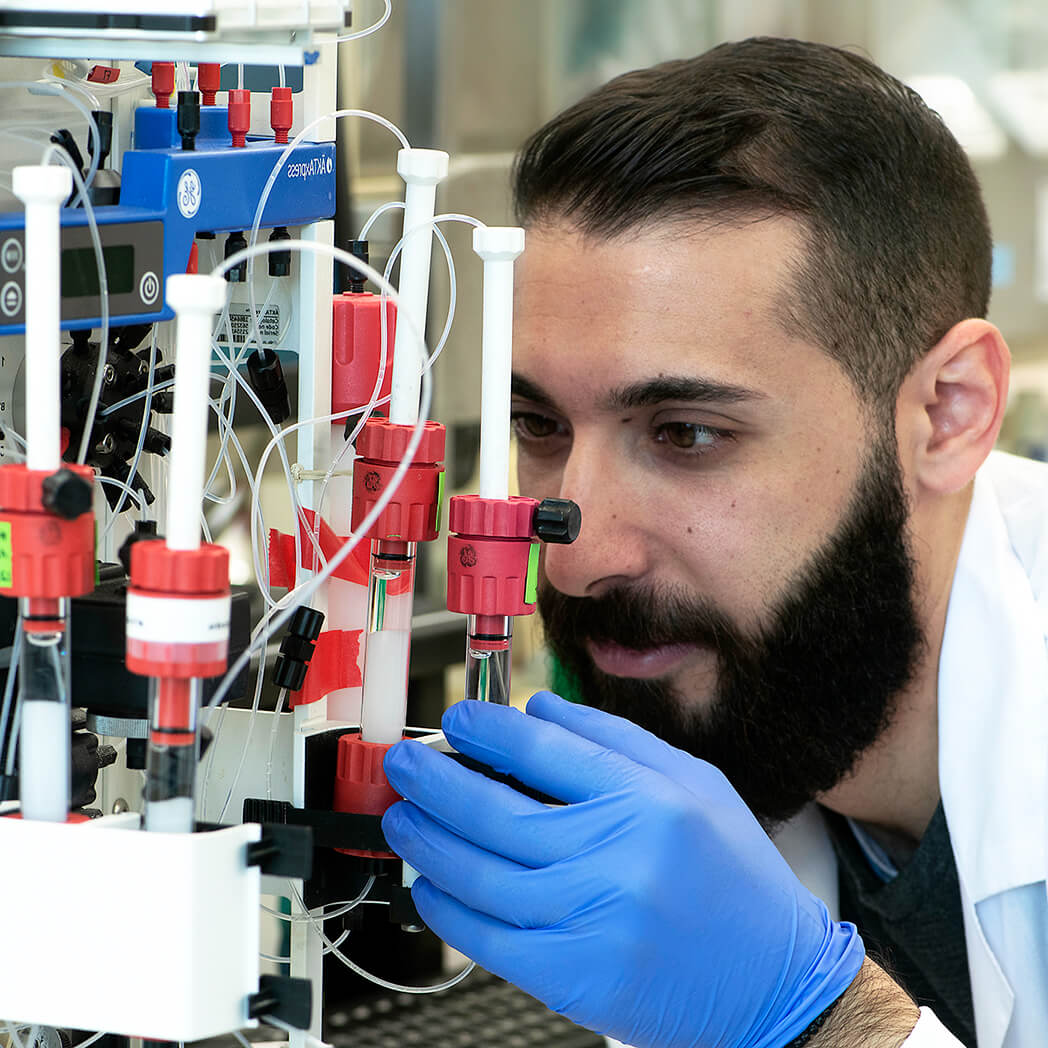Overview
Cat #:
APC-022-GP
Alternative Name KV7.1, Voltage-gated potassium channel QKT subfamily member 1, KVLQT1
Lyophilized Powder yes
Type: Polyclonal
Host: Guinea Pig
Reactivity: H, M, R
Immunogen
- Peptide (C)TYEQLTVPRRGPDEGS, corresponding to amino acid residues 661-676 of human KCNQ1 (Accession P51787). Intracellular, C-terminus.
Accession (Uniprot) Number P51787
Gene ID 3784
Peptide confirmation Confirmed by amino acid analysis and mass spectrometry.
Homology Rat, mouse - 14/16 amino acid residues identical.
Purity Affinity purified on immobilized antigen.
Form Lyophilized powder. Reconstituted antibody contains phosphate buffered saline (PBS), pH 7.4, 1% BSA, 0.05% NaN3.
Form Lyophilized powder. Reconstituted antibody contains phosphate buffered saline (PBS), pH 7.4.
Isotype Guinea pig total IgG.
Storage before reconstitution The antibody ships as a lyophilized powder at room temperature. Upon arrival, it should be stored at -20°C.
Reconstitution 25 µl, 50 µl or 0.2 ml double distilled water (DDW), depending on the sample size.
Reconstitution 0.2 ml double distilled water (DDW).
Antibody concentration after reconstitution 0.8 mg/ml.
Storage after reconstitution The reconstituted solution can be stored at 4°C for up to 1 week. For longer periods, small aliquots should be stored at -20°C. Avoid multiple freezing and thawing. Centrifuge all antibody preparations before use (10000 x g 5 min).
Standard quality control of each lot Western blot analysis.
Applications: IHC, WB
Cited Applications: IHC*
Western blot
- Rat heart and spleen, mouse heart and human colorectal adenocarcinoma, colo205 cell line (1:200-1:1000).
 Western blot analysis of rat heart membrane (lanes 1 and 3), rat spleen lysate (lanes 2 and 4), mouse heart membrane (lanes 5 and 6) and human Colo205 cell line lysate (lanes 7 and 8):1,2,5,7. Guinea pig Anti-KCNQ1 Antibody (#APC-022-GP), (1:200).
Western blot analysis of rat heart membrane (lanes 1 and 3), rat spleen lysate (lanes 2 and 4), mouse heart membrane (lanes 5 and 6) and human Colo205 cell line lysate (lanes 7 and 8):1,2,5,7. Guinea pig Anti-KCNQ1 Antibody (#APC-022-GP), (1:200).
3,4,6,8. Guinea pig Anti-KCNQ1 Antibody, preincubated with KCNQ1 Blocking Peptide (#BLP-PC022).
Immunohistochemistry
- Mouse heart sections (1:200).
Scientific background
KCNQ1 (KV7.1) is part of a voltage-gated K+ family that includes 5 other members (KCNQ1-5).
The channel has been intensively studied since it was found that together with MinK (Isk) it is responsible for the cardiac Iks current that controls the duration of the action potential of the human heart. Indeed, mutations in either KV7.1 or MinK can be responsible for long QT syndrome, a cardiac disorder that causes arrhythmias and sudden death1-3.
Although KV7.1 expression and function have been mainly investigated in relation with cardiac function the channel is widely distributed in epithelial tissues where it is involved in physiological functions such as the regulation of acid secretion in the stomach and Cl- secretion into the colon1-3.
Application key:
CBE- Cell-based ELISA, FC- Flow cytometry, ICC- Immunocytochemistry, IE- Indirect ELISA, IF- Immunofluorescence, IFC- Indirect flow cytometry, IHC- Immunohistochemistry, IP- Immunoprecipitation, LCI- Live cell imaging, N- Neutralization, WB- Western blot
Species reactivity key:
H- Human, M- Mouse, R- Rat
Lyophilized Powder
For research purposes only, not for human use
Last Update: 25/03/2025
Specifications
Citations
Citations
